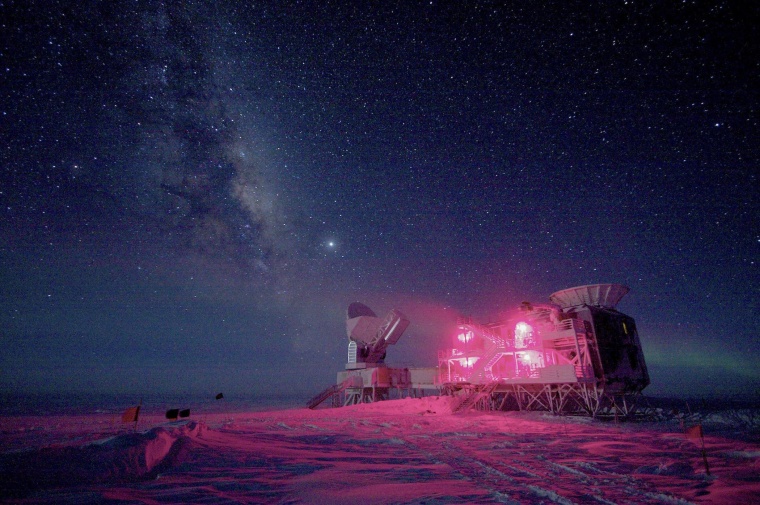Have you heard the words "Big Bang", "inflation", "gravitational waves" thrown around on the internet at unusually high levels this week? That's because cosmologists at Harvard University held a press conference on Monday to announce the results of the BICEP2 (Background Imaging of Cosmic Extragalactic Polarization) telescope located at the South Pole.
BICEP2, and its predecessor BICEP1, were designed to measure the polarization of the cosmic microwave background radiation (CMB), the afterglow of the Big Bang. Polarization essentially refers to how light is twisted with respect to the direction it's traveling. Mathematical models predict a pattern of polarization imprinted on the CMB from a phase of the early Universe called inflation. And when I say early, I mean early: when the Universe was only 10¯³² seconds old - that's 0.00000000000000000000000000000001 seconds. This imprint is the result of gravitational waves generated in the fabric of space-time by this period of inflation. Long predicted by Einstein's theory of relativity, this is the first observational evidence for gravitational waves so the physics and astronomy communities are understandably excited.
There have been a flood of great explanations of the science behind why this announcement is so significant such as this video by Minute Physics and this one by Nature News. For me though, the most amazing thing to hit the interwebs this week is this video of theoretical physicist, Andrei Linde (a professor at Stanford University and one of the contributors to the theory of inflation), hearing the news. It's a perfect illustration of how science works: develop a theory, determine what the theory predicts, make observations looking for said predictions, and compare the two. Linde's (and others') predictions were just observed - that's science in action!
More geek from the Universe:
- Astronomers fight over who gets to name craters on Mars. Maybe you?
- How a manicurist helped scientists to better track endangered loggerhead turtles.
- The most beautiful animal you've probably never seen. Hint: it's tiny and sparkly. [VIDEO]
- Five graphics that illustrate how climate change has shifted spring earlier and earlier.
- Scientists estimate the human nose can detect at least 1 trillion odors with only 400 odor receptors.
- Check out the stunning winners of the 2014 Wellcome Image Awards - a science imaging contest.
- Enzyme discovered that might be responsible for setting our body clocks, and consequently resetting them if science has its way.
- For the math fans among you: estimating the weight of Captain America's shield from movie clips only.
- Entomologists use lasers to identify flying insects by recording the frequency of their wing beats.
- Entertaining map of how many times cities in the U.S. have been destroyed by various Hollywood disaster plots.
Have a great geeky week! @Summer_Ash
